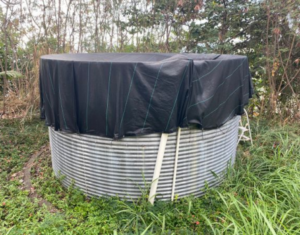
In some areas of the Big Island of Hawaii there are no systems for town water. In these areas, homes are plumbed with a water catchment system. This is a large tank located on the property used to catch rain water for use inside your home. It’s connected directly to your plumbing and creates a source for running water. Here is a brief introduction to water catchment.
Pros
- Softest Water Possible: Since water catchment systems are pure rainwater, it provides soft water without any added minerals that may cause build-up on your fixtures. This also means no minerals to dry out you hair or skin after showering and won’t cause streaks when washing your car.
- No Water Bill: As a water catchment system relies purely on the natural water cycle to replenish, it is self renewing, so you can avoid a monthly water bill.
- Know Exactly What is in Your Water: If you’re someone who likes to know exactly what is in your water this is the ideal way to do so.
Cons
- Non-Potable Water Source: Typically, a catchment system provides only non-potable water. Any water taken from a catchment system should be boiled before ingesting. Because of this, many people choose to buy water for their drinking needs. In areas where water catchment is common there are typically locations at which you can get potable water easily. It is possible to have filtration systems installed but these systems will add to the up front cost of your catchment system and will need regular maintenance to keep your water clean.
- Reliant on Rainfall: Catchment systems rely completely on rainfall to fill the tank which makes it susceptible to drought. When this happens you will have to call someone to fill your tank with clean water which can be costly. It’s important to know that your area typically has enough rainfall to keep your tank filled.
- Regular Maintenance Required: There are many steps to make sure your catchment water stays as clean as possible. From sediment collecting at the bottom of the tank, to water disinfection and pest control. As a result, regular maintenance will be required.
Catchment isn’t typically a choice. It’s often the only option for water supply in areas where it’s commonly found. It’s important to do your research and get all the information. If a house you’re looking at buying or renting says that it is on a catchment system, know what you’re getting into as it’s not something that can be easily changed in the future.